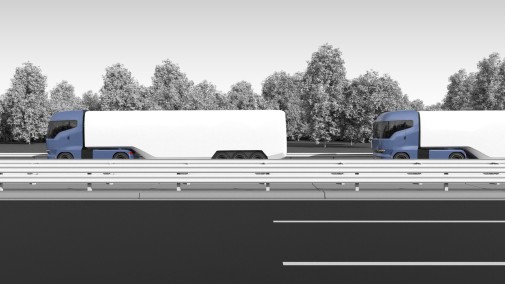보도 자료
Knorr-Bremse prepares field testing of truck platooning in North America
9월 26, 2016
Automated truck convoys save fuel and increase road safety
Knorr-Bremse, the global market and technology leader in safe and efficient road transportation, is working on a system for truck platooning and will shortly be testing it on US highways with a view to gauging driver acceptance and assessing the feasibility of fully networked truck convoys.
“Platooning involves electronically linked trucks following a lead vehicle at a short distance behind each other. Their aerodynamic alignment saves significant quantities of fuel, and Knorr-Bremse assistance systems mean that rear-end collisions resulting from driver inattention are ruled out,“ explains Dr. Peter Laier, Member of the Executive Board of Knorr-Bremse AG and responsible for the Commercial Vehicle Systems division. The basis for platooning is provided by standard, volume-produced Knorr-Bremse driver assistance systems such as adaptive cruise control and the emergency braking assistant. Data from the brakes and sensors in the lead vehicle is transmitted wirelessly to the other trucks in the convoy and this ‘electronic drawbar’ effect enables the gap between them to be significantly reduced.
Since early 2015 Bendix Commercial Vehicle Systems LLC, Knorr-Bremse’s US subsidiary, has been developing the platooning system and has already demonstrated a prototype to various fleet operators. The company is currently working with a partner on preparing a field test on US highways, with a view to assessing driver acceptance and gaining insights about regulatory requirements.







